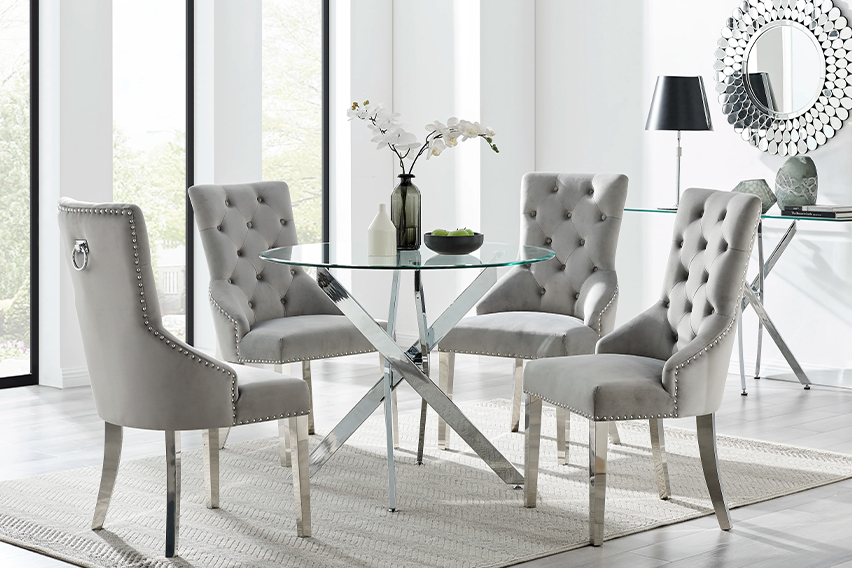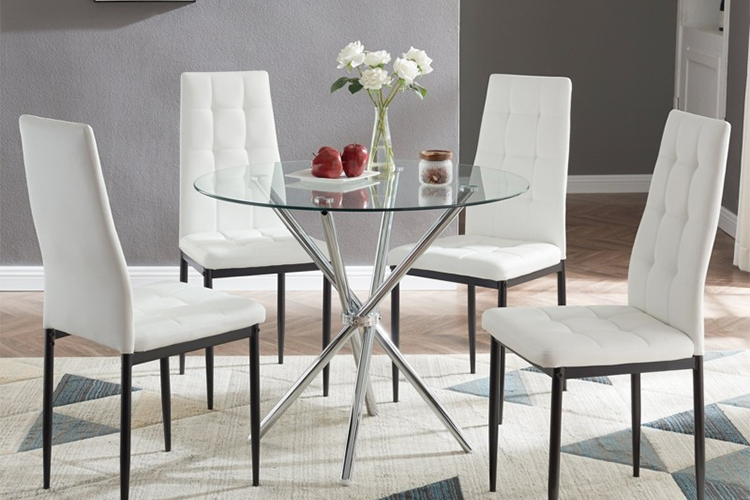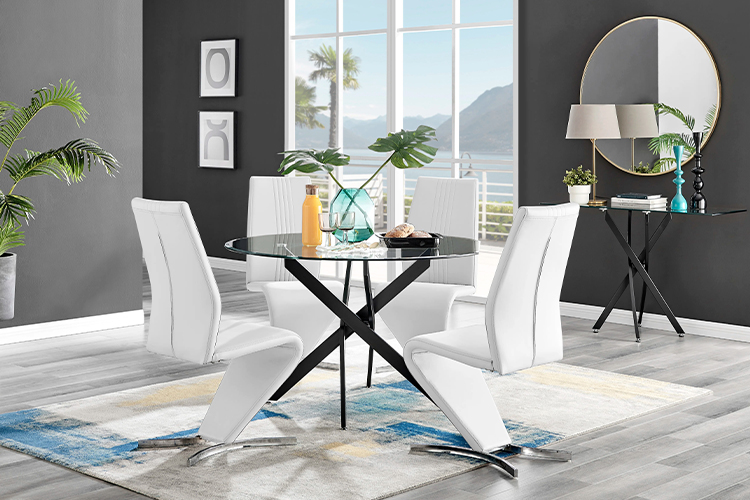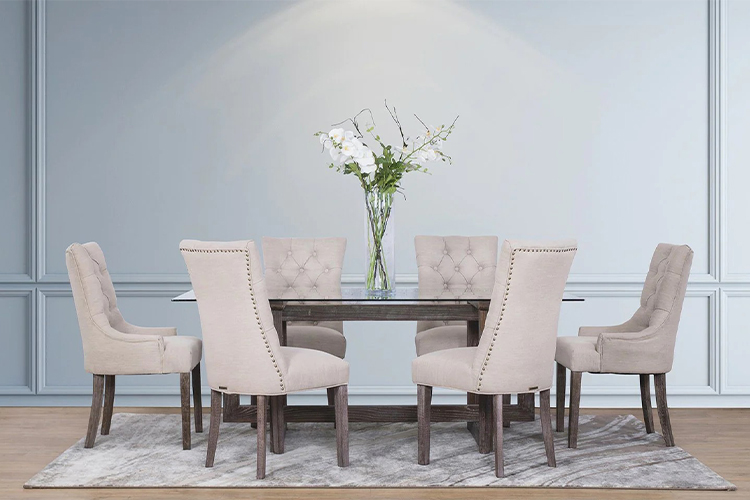
Learn how to create glass dining room sets that will last in your home for generations
Glass and chrome seem right, glass and wood don’t. We associate glass so much with contemporary, modern and minimalist homes that we don’t realize how versatile this material actually is. It is neat and elegant, adds wonderful value to your home and can be well maintained for years. Dining tables with glass tops have become very popular recently. The best one for your home is one that fits your budget, is solid and well-constructed, fits your space, and fits your home style. While dining tables are almost always chosen based on their function or appearance, wood type or silhouette, glass can require a little more work.
There is no fixed budget for glass top dining table sets. Surprisingly, you will be amazed at what is possible or what can be done on a limited budget. When it comes to glass, the presentation is particularly important. While how the dining table looks is important, how it fits into the surrounding space is also important. You don’t want your dining set to stick out like a sore thumb, do you? Or the rest of your home in vintage wood while dining in chrome and steel? Glass surfaces appear clean and elegant. They expand the decorative influences of their surroundings. Consider these tips before choosing a glass-top dining table to ensure you have one that will stay in the family for years to come.

Yes, money. The dining table costs money, a lot. You’ll be surprised at how much it makes when you buy materials and wood and glass and nuts and add the manufacturing costs to that. Personalized and customized versions require even larger pockets. Why would you do that? Because you want your dining table to provide years of enjoyment. Do not fold at the first sign of a change in decor. A rule of thumb when budgeting is to map out your expenses and work backwards. Get a rough overview of the different prices. Frosted glass, stained glass and clear glass panels have different prices. In addition, they also take waste into account. Plan before you buy, otherwise you will face unforeseen costs.

A good dining table is one that lasts a long time. If you’re planning on building one, minimize the hassle and bells and whistles and go for sturdiness instead. Choose tempered glass, preferably from a single panel without etchings or patterns. Look at the construction of the table and whether you want it to be round or rectangular. Round glass tables require special care and a stable base. Timeless designs are easier to manufacture, ergonomic, functional and easy to maintain. You don’t want to make something that will be too heavy to hold up during a move or renovation.
Imagine for a moment how much effort you put into planning and making a dining table. The hours of work that go into materials and workmanship, ideas and plans. Then everything falls apart because you forgot to measure the space it will take up in your dining room? Design and measurement mismatch is a danger you want to avoid. As a rule of thumb, always start with the dimensions, not the design. See what type of space you have, what fits, and how it can be designed. Tables with a glass top surprisingly fit everywhere, are often easy to dismantle and are discreet. Intact round glass panels require a central support column and fit well in corners. Longer tables for six to eight people take up more space and are ideal for large dining rooms. Whatever you decide, just measure your space and then plan everything else.

In contrast to normal wooden dining tables, dining tables with glass tops are transparent. Therefore, seating is important. Balanced seating is important because you can’t hide these chairs. Alternatively, large, ornate seating will not work with a delicate glass top. But goes well with colored, heavy glass. Decide whether woodwork or modern chrome and metal. The most important thing is to understand “visual weight”. It’s the feel of furniture and how much it overwhelms or underwhelms a room. Technically speaking, the placemat from Eq as may be too dark or too bulky for the dining room.
In contrast to a normal wooden table top, which can be shaped and attached when ready for assembly, glass shapes must be determined before production. Glass tables are popular in round or oval shapes, but are less commonly seen in square or rectangular shapes. This is because the single perimeter of the glass is better supported in the middle than on the sides. Round shapes are also great for small families, improving conversations and eliminating the need to stand at the table. Assess the needs of the people who will be sitting here and design accordingly.
Base, trestle, legs – there are so many ways to carry glass placemats. Pedestals are probably the most popular and allow more people to gather around them. When choosing your glass table, always decide how it can accommodate people. Try sitting around, stretching your legs, and moving things. Check whether you have enough space for your knees. Table supports help with support while providing flexibility. Glass tables with legs are just as stylish, although perhaps space-consuming and impractical.
Although we have already discussed glass and its types in this article, it is important to know what you want before purchasing. Among the clear, tinted and frosted glasses, clear glass is the most commonly purchased. It works relatively inexpensively and creates a feeling of openness. Although glass does not react to cold, it can crack, break or chip when exposed to heat. A good branded glass can last for decades, but scratches can damage it.